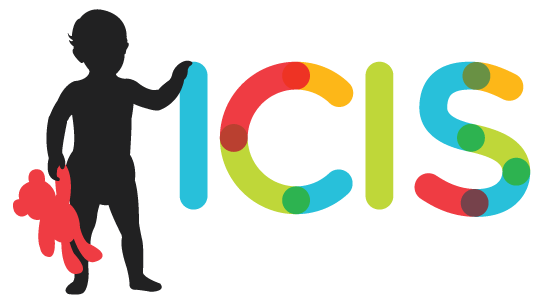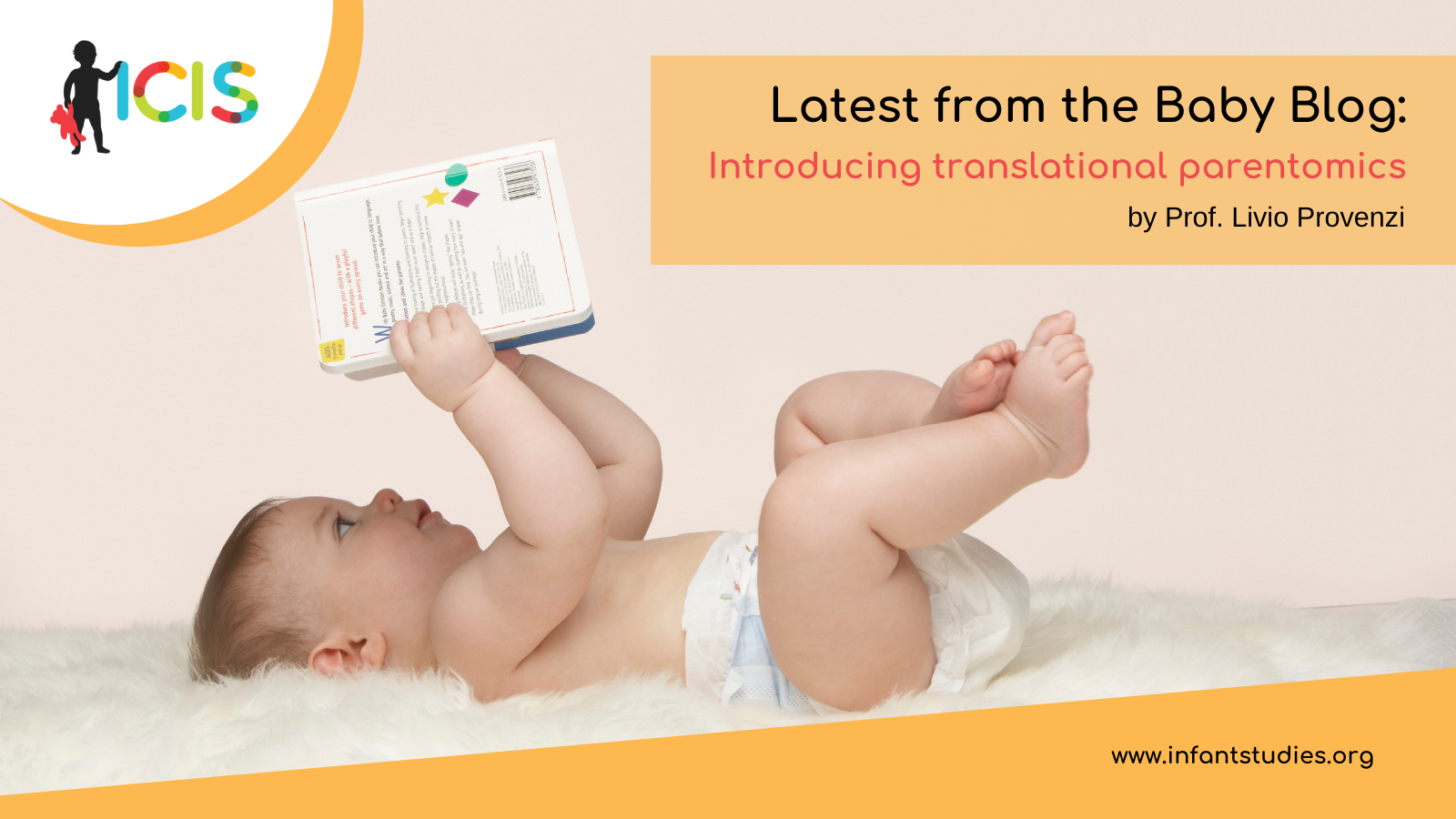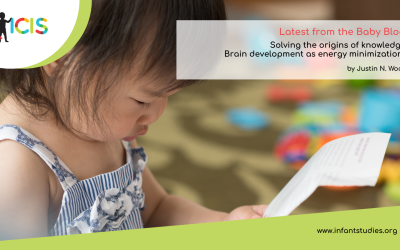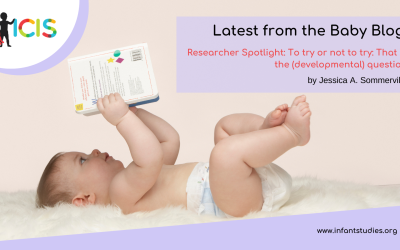Vision: […] But before I go, I feel I must know. What am I?
Wanda Maximoff: […] You are a body of wires and blood and bone […] You are my sadness and my hope. And mostly you’re my love.Source: WandaVision, TV series, 1×09 “The series finale”
A recent publication in Quaternary Science Reviews (Bennet et al., 2020) revealed human footprints from the Pleistocene discovered in White Sands National Park, New Mexico. These footprints belonged to two individuals: a young adult female who made two trips separated by at least several hours, carrying a young child and walking together with them for a while. I came across this publication by chance—as paleontology is not exactly my main topic of interest—but it immediately clicked and perfectly fit within my epistemic view of human development, inspired by the Infant Research tradition and recent advances in socio-affective neurosciences and developmental psychobiology. For such a long time on this planet, we—human beings—have moved around caring for babies, establishing early attachment relationships, becoming parents and caregivers, and shaping our behavior and cognition to care for the most vulnerable—yet malleable and adaptive—of us: infants, our future. As if we still needed further evidence—beyond neonatal imitation and infant sensitivity to interactive ruptures in the “still face” paradigm—paleontological evidence also supports the notion that we are animals made for togetherness, that we are born to be wired to each other, to paraphrase Steppenwolf’s 1969 masterpiece.
Parentomics and the parentome
Parenting is indeed a special form of human togetherness that emerges with the appearance of a new individual of our species—at least during pregnancy, if not even before, when adults start to plan, imagine, and dream about having a baby. It is a very complex and multifaceted behavioral system that has its roots and critical mechanisms intertwined with crucial regulations of physiological, neuroendocrine, epigenetic, and neural dimensions. The last two to three decades in developmental scientific research have been characterized by the gradual and decisive introduction of multiple -omics [e.g., a large set of data to describe in detail the functioning of a complex system], which now largely guide our view of how human infants grow and develop. This includes—among others—proteomics, epigenomics, and connectomics. I first heard about “the behaviorome” in Berlin, during a fantastic talk by Tim Oberlander at ICIS 2014. More recently, Vicky Leong referred to “the interactome” while presenting her original findings at ICIS 2024 in Glasgow. So, I believe it will not be surprising for any reader of this blog to be introduced to “the parentome”, or the complex and multi-layered system of dynamic and non-linear transactions that constitute what we observe and usually call “parenting” and its implications for infant development. In turn, parentomics is the translational scientific field that aims to produce scientific, clinical, and societal impact to nurture parenting and human development.
A porridge-like view on parenting
In an attempt to provide clinicians who deal with child disability and rehabilitation with a trans-theoretical, light, yet pragmatic tool to frame parenting and parental needs when carrying out family-centered early interventions, we recently published a Porridge-like model of parenting (Provenzi et al., 2021). Honestly, it is nothing special from a theoretical perspective, as it just outlines that parents perform three types of actions: affective acts (e.g., emotional states, regulatory mechanisms, self- and other-soothing, etc.), behaviors (e.g., affective touch, offering toys, scaffolding and modeling, etc.), and cognitive processes (e.g., developing representations of themselves and the infant, having expectations, keeping memories, interpreting infant cues as intentional mental states, etc.). Throughout child development, these ingredients are continuously mixed, and their reciprocal mixture contributes to the actual parental porridge status moment by moment, with micro-dynamic oscillations that can become observable macroscopic shifts at specific turning points of each child’s and family’s developmental trajectory. Nonetheless, such porridge cooking does not happen in a vacuum; rather, it happens in the context defined by child development and the degree of child disability. If the child presents no disabilities or psychomotor limitations, we have our porridge in a large cup, with a comfortable handle and a saucer underneath – in short, the epitome of ease and practicality. Parenting can move in multiple directions, with many possibilities, allowing us to support parents of children with “typical” development in many open ways. Nonetheless, when a child presents with disabilities or psychomotor limitations, we may have our porridge in a smaller espresso-like cup, without a handle or saucer – we need to follow the child even more closely here. Little ingredients can be added one by one, not too much, just enough; and parenting needs to be supported accordingly, one step at a time, preventing the cup from overflowing and ensuring that both the child and parents are not overwhelmed by excessive demands or anxiety.
Epigenetic and neural layers of the parentome
Nonetheless, this is only one layer of the parentome. We know quite well how parenting – and adverse conditions that limit and affect parenting and parent health and well-being—can get under the skin and contribute to shaping the epigenetic machinery of infants from the womb to later childhood. For example, we conducted a longitudinal study on the epigenetic correlates of very preterm birth, showing how the partial absence of parenting comfort and regulatory closeness due to architectural and/or cultural barriers in developmental care can, when combined with exposure to neonatal pain, alter the methylation status of the serotonin transporter gene. This has cascading effects on brain, behavioral, and socio-emotional development up to 5 years of age (Fumagalli et al., 2018; Montirosso et al., 2016; Provenzi et al., 2020). Other groups have also documented that investing in parent-infant closeness and physical contact from the very early stages of hospitalization in preterm babies can result in infants’ epigenetic markers showing evidence of the neuroprotective effects of parent-led non-pharmacological support (Fontana et al., 2021; Hucklenbruch-Rother et al., 2020). More recently, we highlighted how pandemic-related stress resulted in alterations of the parentome—with increased anxiety and parenting stress, along with reduced social support and feelings of bonding to the child (Grumi et al., 2021; Provenzi et al., 2023)—leading to similar alterations in the epigenetic regulation of the offspring’s serotonergic system as seen in preterm babies, with significant consequences for socio-cognitive and emotional development, as well as sleep and language development (Nazzari et al., 2022).
We can observe the parentome from the perspective of socio-affective neuroscience, especially thanks to the rising success of hyperscanning paradigms (Endevelt-Shapira et al., 2021; Reindl et al., 2022; Santamaria et al., 2020). Hyperscanning allows us to study multiple brains—such as those of parents and infants—during social exchanges, both in the lab and in more ecologically valid conditions. Shared patterns of brain activity between interacting parents and infants provides a fascinating view of how parenting and infant development are not separate processes but different perspectives on the same “moving animal,” what we in our lab like to call “the bi-cerebral human being” (Provenzi et al., 2023). With this definition, we emphasize that understanding human development and the parentome requires an interactive and at-least-dyadic viewpoint in our scientific endeavors. Indeed, if parents and infants each get under each other’s skin and share neural connections moment-by-moment, where do we draw the separation line between the parent and the child? What else can we discover if we consider them a unique system, a unique living organism – as Louis Sander, a pioneer in Infant Research, suggested several decades ago (Sander, 2007)? In an attempt to translate this perspective into clinical practice, we have recently highlighted how researchers and developmental care practitioners can benefit from the establishment of a translational hyperscanning research field.
There’s more to add beyond the parentome itself
Finally, as Parnes and Sanson beautifully highlighted in this Baby Blog (https://infantstudies.org/born-in-a-time-of-climate-crisis-understanding-the-risks-and-supporting-the-wellbeing-of-infants-in-the-21st-century/), we should begin to consider parenting and the parent-infant ensemble as moving within a world characterized by the climate change crisis. Parents and infants are not unaffected by adverse climate events or the implications of climate discourse. While I encourage readers to explore Parnes and Sanson’s contribution further, I want to emphasize the power of parenting, even in a time of climate crisis. We recently reported that in a moderately large sample of Italian families living in Northern Italy, the impact of PM2.5 pollution on infant epigenetic markers was moderated by maternal psychological stress and well-being during pregnancy (Nazzari et al., 2023). In other words, the pollutant effects on infants’ serotonergic system methylation status were more pronounced when mothers also reported higher levels of prenatal stress during the lockdown periods, which were quite dramatic in many areas of Northern Italy at the beginning of the pandemic in 2020. These findings suggest that while we build an overall framework for the parentome, we should not limit our focus to household boundaries. Instead, we should consider community health and education about critical societal issues such as climate change and environmental crises as essential pillars of our understanding in developmental studies.
Concluding remarks
In conclusion, I propose that parentomics serves as a common epistemic ground for researchers, clinicians, parent associations, and policy-makers who aim to leverage existing scientific knowledge on parenting and infant research to foster societal and caregiving actions that support future generations. The parentome provides a framework for exploring and conceptualizing parenting and infant development through a lens of complexity, multi-layered dynamics, and non-linearity. Moreover, the concept of the parentome implicitly suggests that parents are not merely a set of skills to be taught or a collection of tactics to be imparted; rather, parents represent a vital context—the environment in which development occurs.
References
Bennett, M. R., Bustos, D., Odess, D., Urban, T. M., Lallensack, J. N., Budka, M., … & Reynolds, S. C. (2020). Walking in mud: Remarkable Pleistocene human trackways from white sands national park (New Mexico). Quaternary Science Reviews, 249, 106610.
Endevelt-Shapira, Y., Djalovski, A., Dumas, G., & Feldman, R. (2021). Maternal chemosignals enhance infant-adult brain-to-brain synchrony. Science advances, 7(50), eabg6867. https://doi.org/10.1126/sciadv.abg6867
Fontana, C., Marasca, F., Provitera, L., Mancinelli, S., Pesenti, N., Sinha, S., Passera, S., Abrignani, S., Mosca, F., Lodato, S., Bodega, B., & Fumagalli, M. (2021). Early maternal care restores LINE-1 methylation and enhances neurodevelopment in preterm infants. BMC medicine, 19(1), 42. https://doi.org/10.1186/s12916-020-01896-0
Fumagalli, M., Provenzi, L., De Carli, P., Dessimone, F., Sirgiovanni, I., Giorda, R., Cinnante, C., Squarcina, L., Pozzoli, U., Triulzi, F., Brambilla, P., Borgatti, R., Mosca, F., & Montirosso, R. (2018). From early stress to 12-month development in very preterm infants: Preliminary findings on epigenetic mechanisms and brain growth. PloS one, 13(1), e0190602. https://doi.org/10.1371/journal.pone.0190602
Grumi, S., Provenzi, L., Accorsi, P., Biasucci, G., Cavallini, A., Decembrino, L., Falcone, R., Fazzi, E. M., Gardella, B., Giacchero, R., Guerini, P., Grossi, E., Magnani, M. L., Mariani, E. M., Nacinovich, R., Pantaleo, D., Pisoni, C., Prefumo, F., Sabatini, C., Scelsa, B., … Borgatti, R. (2021). Depression and Anxiety in Mothers Who Were Pregnant During the COVID-19 Outbreak in Northern Italy: The Role of Pandemic-Related Emotional Stress and Perceived Social Support. Frontiers in psychiatry, 12, 716488. https://doi.org/10.3389/fpsyt.2021.716488
Hucklenbruch-Rother, E., Vohlen, C., Mehdiani, N., Keller, T., Roth, B., Kribs, A., & Mehler, K. (2020). Delivery room skin-to-skin contact in preterm infants affects long-term expression of stress response genes. Psychoneuroendocrinology, 122, 104883. https://doi.org/10.1016/j.psyneuen.2020.104883
Montirosso, R., Provenzi, L., Fumagalli, M., Sirgiovanni, I., Giorda, R., Pozzoli, U., Beri, S., Menozzi, G., Tronick, E., Morandi, F., Mosca, F., & Borgatti, R. (2016). Serotonin Transporter Gene (SLC6A4) Methylation Associates With Neonatal Intensive Care Unit Stay and 3-Month-Old Temperament in Preterm Infants. Child development, 87(1), 38–48. https://doi.org/10.1111/cdev.12492
Nazzari, S., Cagliero, L., Grumi, S., Pisoni, E., Mallucci, G., Bergamaschi, R., Maccarini, J., Giorda, R., & Provenzi, L. (2023). Prenatal exposure to environmental air pollution and psychosocial stress jointly contribute to the epigenetic regulation of the serotonin transporter gene in newborns. Molecular psychiatry, 28(8), 3503–3511. https://doi.org/10.1038/s41380-023-02206-9
About the Author

Prof. Livio Provenzi
Department of Brain and Behavioral Sciences, University of Pavia, Pavia, Italy / Developmental Psychobiology Lab, IRCCS Mondino Foundation, Pavia, Italy
Livio Provenzi is Associate Professor at the University of Pavia (Italy) where he teaches Developmental Psychobiology and Developmental Psychopathology. He coordinates the Developmental Psychobiology Lab (dpb lab, www.devpsychobiology.com) of the IRCCS Mondino Foundation (Pavia, Italy). Author of more than 130 peer-reviewed articles in international scientific journals and associate editor for Infant Behavior and Development, he integrates methodologies from infant research, neuroendocrinology, epigenetics and neuroscience to explore how human relationships across the first thousand days shape the neurobiological mechanisms that make us who we are. Furthermore, his research aims at translating this knowledge into effective family-centered interventions for parents of infants with developmental risk conditions. He received awards from Pediatric Research (2018), Acta Paediatrica (2021), and ICIS (2024). Amateur pianist and “food explorer”, in 2024 he published the volume Psychobiological Footprints through Human Development: How Our Experiences Shape Who We Are for Routledge.




